Growing Calabrese AKA ‘Broccoli’ – Here Are Some Top Tips From Allotment Gardeners

VEGETABLES > BROCCOLI

Elizabeth is a Permaculture Garden Designer, Sustainability Consultant and Professional Writer, working as an advocate for positive change. She graduated from the University of St. Andrews with an MA in English and Philosophy and obtained a Diploma in Applied Permaculture Design from the Permaculture Association.
Reviewed By DAN ORI

Dan has over 27 years’ under his belt caring for plants and gardens. Working as a Horticultural Instructor and Consultant, he draws on a diverse range of experience that includes working as a Head Gardener, Tree Surgeon, Garden Centre Trouble Shooter, and writer of academic papers. Dan has a Level 3 Diploma in Horticulture and is currently a candidate for the RHS’s most prestigious award – The Master of Horticulture.
Contributions From JANICE SHIPP

Janice Shipp is a Writer with 15 years' experience as Principal Researcher for Which? Gardening magazine. She has received her RHS MHort and City and Guilds Planting Design qualifications and is a member of the RHS Herbaceous Plant Committee. Janice is also a member of both the Garden Media Guild and Chartered Institute of Horticulture - and was Chair of forum on a Penstemon trial for the Royal Horticultural Society.
IN THIS GUIDE
Calabrese is the proper name for what most people think of as broccoli here in the UK.
There is a lot of confusion over the name, but those vegetables with large green heads that look like little trees are a specific type of broccoli known as Calabrese.
Calabrese are sown in spring and harvested over the summer.
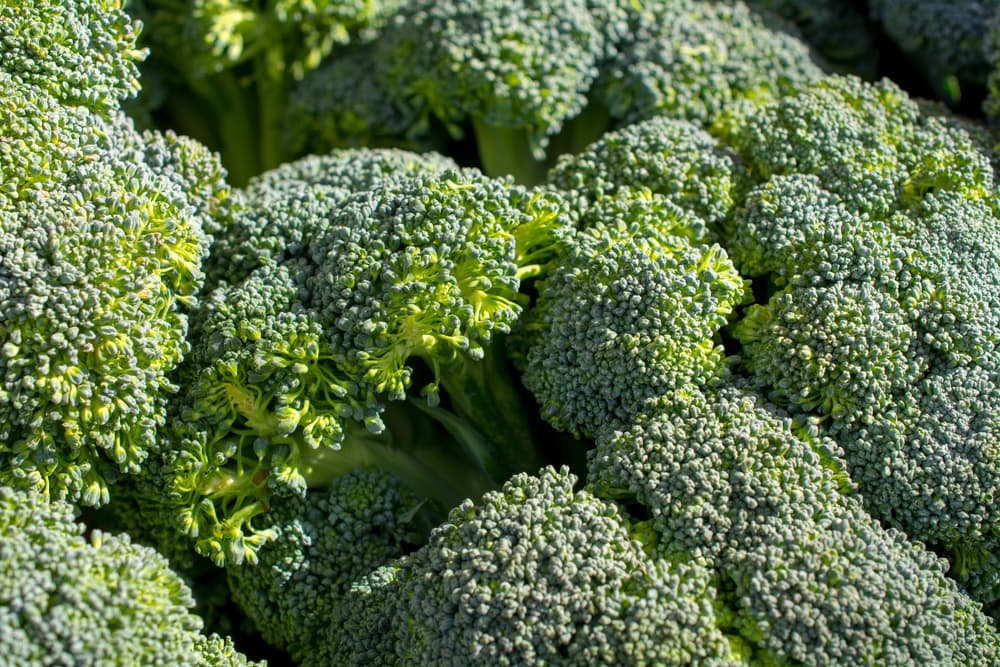
Sprouting broccoli, on the other hand, is planted one year, overwinters – and then provides its yield not in its first season but the following year.
Sprouting broccoli has many smaller florets, rather than one central initial head. These are often purple or white in colour.
Overview
| Botanical Name | Brassica oleracea var. italica, calabrese |
| Common Name(s) | Broccoli |
| Plant Type | Vegetable |
| Native Area | Cultivated |
| Hardiness Rating | H3 |
| Foliage | Biennial but harvested first season |
| When To Sow | March, April, May, June |
| Harvesting Months | July, August |
Sunlight
Preferred
Full Sun / Light Shade
Exposure
Sheltered
Size
Height
0.1 – 0.5M
Spread
0.1 – 0.5M
Soil
Preferred
Most firm, fertile soil
Moisture
Moisture retentive yet well-drained
pH
Any
Both the plant referred to as Calabrese in the UK, and broccoli that overwinters, are Brassica oleracea.
Both Calabrese and sprouting broccoli are in a cultivar group called ‘Italica’ within that species.
Cauliflower and Romanesco also belong to this group.

Many other brassicas that we grow as garden crops in a vegetable garden, including kale, collard greens, cabbage, Brussels sprouts and kohlrabi belong to different cultivar groups within this species.
Calabrese, what we most typically think of as broccoli today, is named after Calabria in Italy.1The Joy Of Purple Broccoli. (2022, January 26). Buffalo Market. Retrieved March 13, 2023, from https://www.buffalomarket.com/blogs/news/the-joy-of-purple-broccoli
It is a plant which grows up to 60cm in height, and produces green heads up to around 15cm across.
While there are also plenty of great reasons to grow sprouting broccoli in your garden, Calabrese is easier for beginners, quicker to crop, and is a staple of home growing in cool temperate climate zones.
Calabrese Cultivars
Once you have decided to grow Calabrese at home, the first thing you need to think about is which particular named cultivar of Calabrese broccoli you would like to grow.
” I love Calabrese because it’s so easy to grow and cook,” says Garden Writer Janice Shipp.
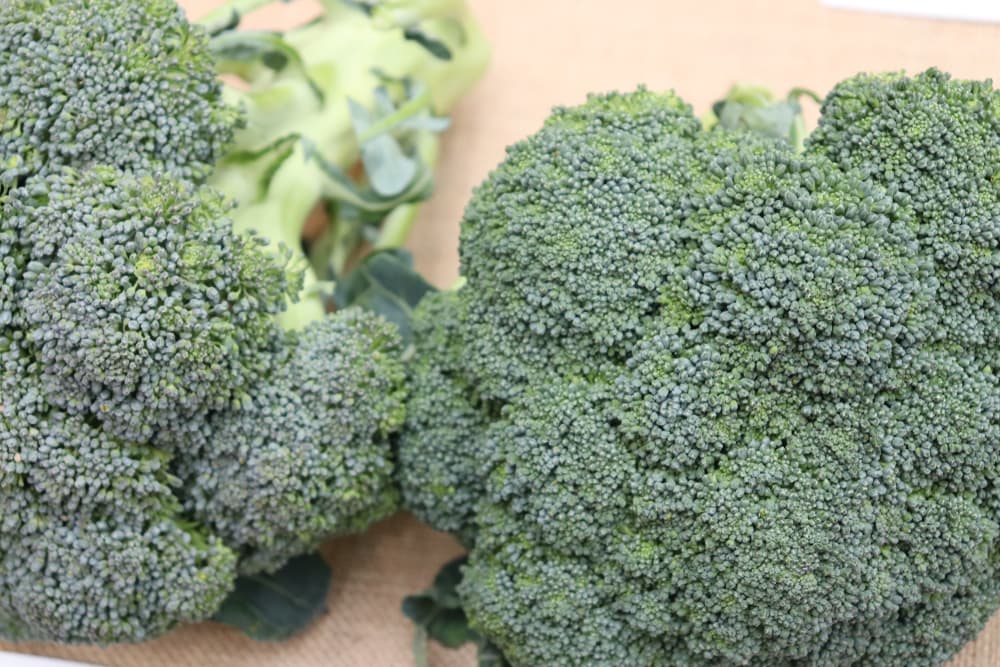
Named cultivars of this type of broccoli in the UK include:
- ‘Belstar’
- ‘Fiesta’
- ‘Green Magic’
- ‘Ironman’
- ‘Kabuki’
- ‘Marathon’
- ‘Monaco’
- ‘Monclano’
- ‘Sakura’
Planting Calabrese
Calabrese is best grown in a fertile growing area in full sun or very light shade.
The soil should be moisture-retentive yet reasonably free draining.
Since Calabrese and other brassicas have high nitrogen requirements, it is best to plant into a bed that has been amended with plenty of organic matter.
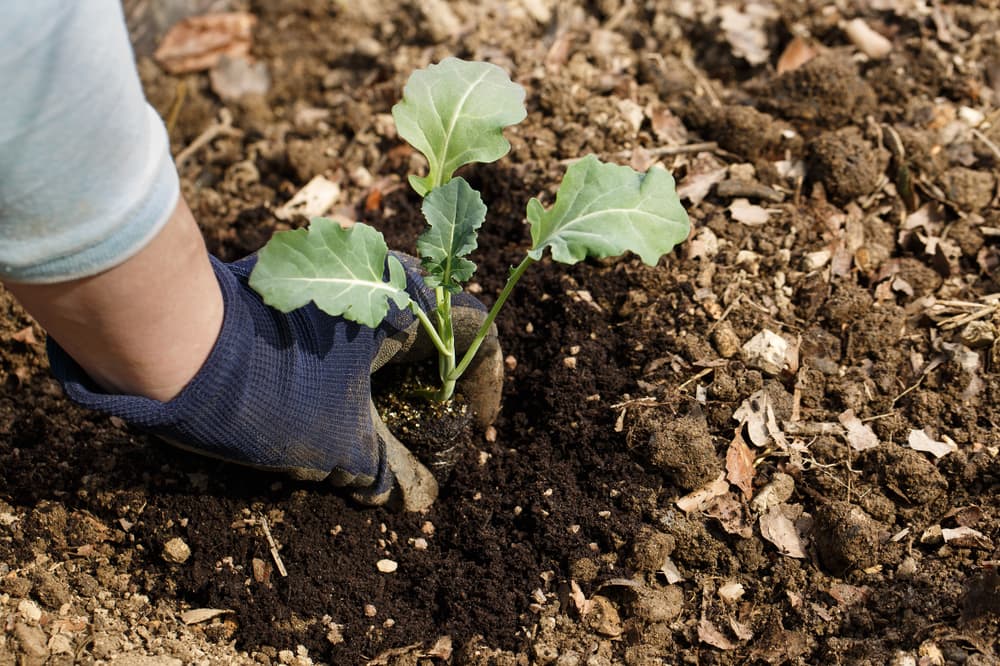
It can also be helpful to place Calabrese into a bed that has just been vacated by nitrogen-fixing plants (such as broad beans or peas which have overwintered, for example).
Before planting out Calabrese, make sure you have enriched the growing area with plenty of good quality compost or well-rotted manure.
“Brassicas like Calabrese need protecting, not only from slugs and snails but from the dreaded cabbage white butterfly,” shares Allotmenteer Emma Bailey.
“These like to lay their eggs on the leaves and once the caterpillars hatch, they can eat your crop within a couple of days! Be sure to net them as soon as you plant them out.
“Pigeons also love a good munch on brassica plants. Make sure the netting goes all the way to the bottom of the raised bed so that birds don’t get underneath and get trapped.”
Companion Plants For Broccoli

If you have sown some Calabrese, or are thinking about doing so, it is also a good idea to think about which other plants to include in the same growing area.
Companion planting can help you make the most of your space, and can increase the yield you are able to achieve in your vegetable plot.
Calabrese can grow well alongside other brassicas, and including your brassicas in the same bed can make it easier to rotate your crops.
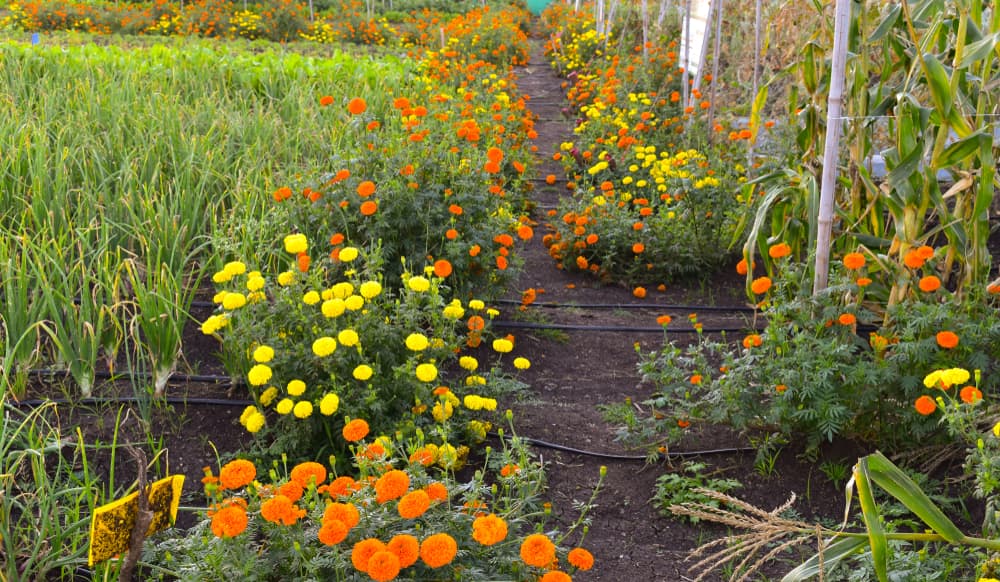
We’ll look at crop rotation a little later in this article.
But in addition to growing other brassicas, you should also consider adding other plants which work well, and which will aid the Calabrese and help enrich biodiversity in your organic garden.
Other common crops which will work well alongside your Calabrese broccoli include:
- Beans – for nitrogen fixation.
- Beetroot – they like similar conditions, and beetroots require little calcium, which is good for brassicas.
- Lettuce – growing ‘quick-growing’ lettuces between Calabrese helps make the most of the space and these will be harvested before the space (and resources) are required by your main crop. It’s also good to let chickweed spread and give ground cover between Calabrese. This weed is also a useful edible, and has attractive flowers.
- Onions, Leeks or Garlic – these may help to repel pests that may plague your Calabrese, such as cabbage worm, weevil and cabbage looper.
- Aromatic Herbs – for example: rosemary, thyme, sage, dill, mint etc. – these will also repel, confuse or act as a distraction to pests.
- Flowers – such as marigolds, borage and nasturtiums – all of which can be excellent companion plants in a vegetable garden.
Keep Calabrese away from asparagus, sweetcorn, squash, and other heavy feeders, which will compete too much with your broccoli plants.
Also keep brassicas away from tomatoes and peppers, since these can attract verticillium wilt, which can spread to damage your Calabrese.
Some gardeners also report that radishes do not do very well when planted near brassicas like Calabrese.
Plant Care
Mulching
Mulching is an important part of organic gardening, and it is particularly important when growing ‘hungry’ plants like Calabrese broccoli.
Choosing the right mulches for the right crops is important.
When it comes to brassicas, and other nitrogen-hungry plants, a green, nitrogen-rich mulch can work wonders.
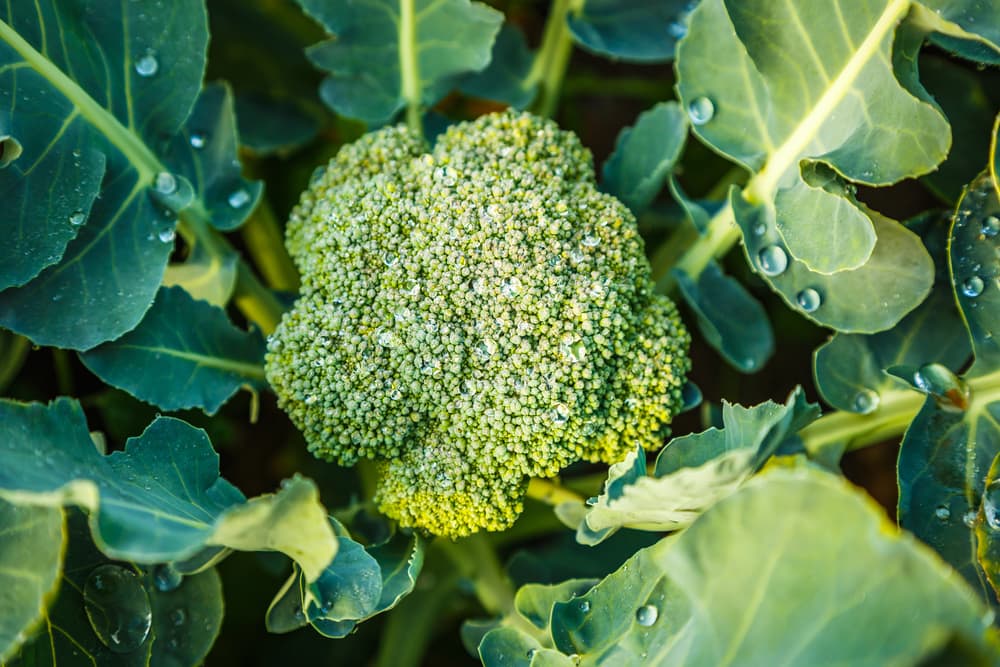
For example, grass clippings (especially from lawns rich in clover), or other leafy green material can make a good mulch to lay between your Calabrese.
As this leafy material breaks down, it will give the brassicas the nitrogen they need.
Of course, you can also mulch around brassicas with homemade or commercial compost, leaf mould or well-rotted manure.
Crop Rotation
Annual brassicas like Calabrese are one of the crops that are best rotated between different growing areas.
When brassicas are grown in the same bed year after year, diseases such as clubroot (a fungal infection that can destroy brassicas by infecting their roots) are more likely to take hold.
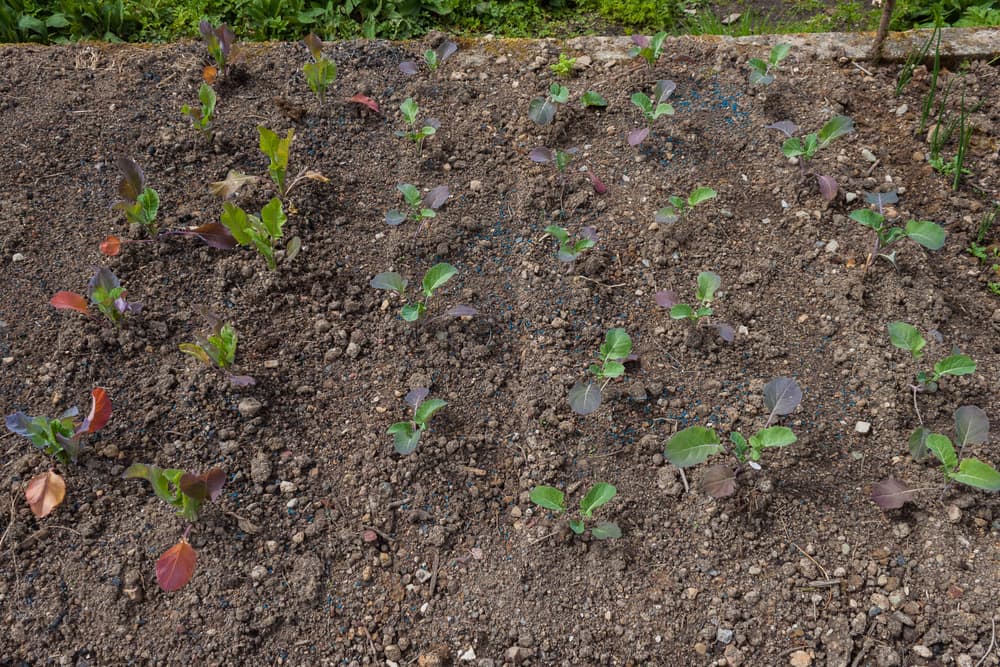
Clubroot can also be avoided by making sure that the soil is slightly alkaline (using lime to raise pH if necessary), and by avoiding waterlogging and compaction.
Brassicas will appreciate it if they are placed in a crop rotation following peas, beans or other nitrogen fixers.
They are often followed by potatoes in a four-year rotation, and the potatoes are then followed by alliums (onion family) and root crops.
References
- 1The Joy Of Purple Broccoli. (2022, January 26). Buffalo Market. Retrieved March 13, 2023, from https://www.buffalomarket.com/blogs/news/the-joy-of-purple-broccoli

